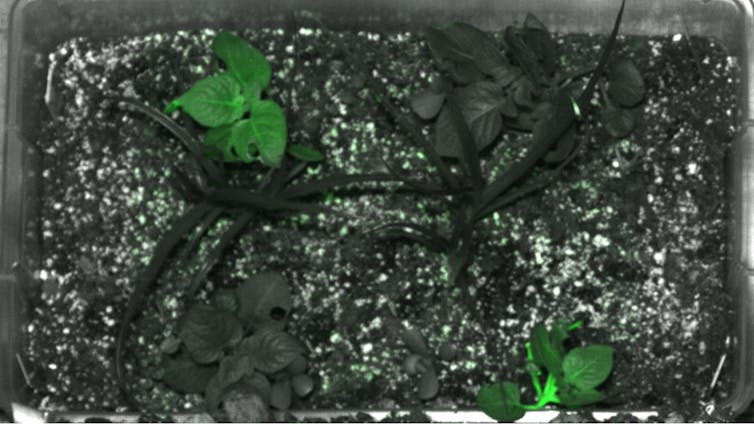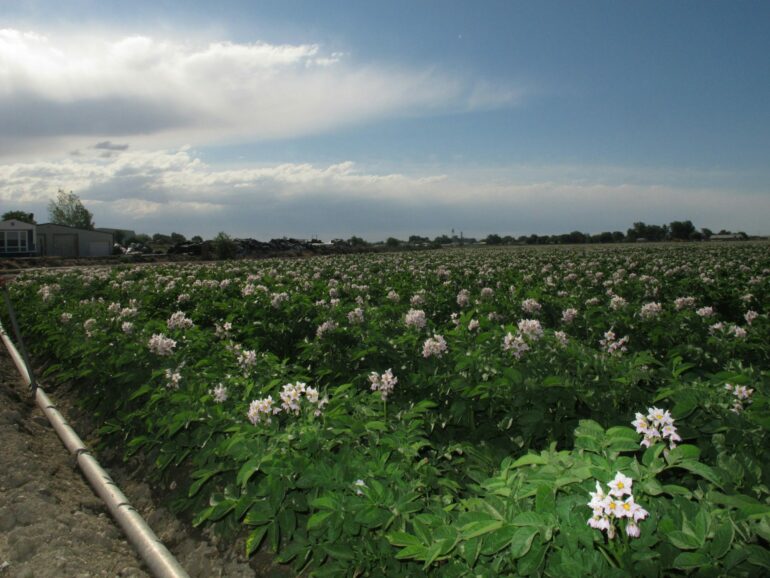While expanding nuclear energy production would provide carbon-free power and can help countries around the world meet their climate goals, nuclear energy could also come with some inherent risk. Radioactive pollution damages the environment, and it’s nearly impossible to detect without specialized equipment. But what if plants growing in the facility’s surrounding area could detect radiation pollution?
The mechanical radiation detectors currently used, called dosimeters, aren’t completely reliable – during previous nuclear accidents such as Chernobyl, they’ve failed or been buried under rubble.
Our team of plant scientists at the University of Tennessee wanted to figure out alternatives to these mechanical radiation sensors to help address their historic failures, so we decided to build a plant-based sensor for gamma radiation. The sensor, called a phytosensor, is a potato plant that glows fluorescent green when exposed to radiation.
Dosimeters sense how large a dose of radiation something in an area exposed to radiation would absorb.
Historic sensor problems
Current nuclear energy production is considered safe by the World Nuclear Association. But safety failures still happen, whether from human error or natural disasters such as earthquakes bringing the mechanical sensors offline – and that’s where our plant sensors could come in.

Radiation sensors can help inform responses to nuclear accidents. Pictured is damage from the 1986 Chernobyl accident.
AP Photo/Volodymyr Repik
Mechanical radiation detection equipment needs electrical power and regular maintenance, both of which make them less reliable during emergencies. A plant-based sensor wouldn’t require either of these.
The kinds of disasters that take mechanical sensors offline might damage the potato sensors but most likely wouldn’t kill an entire planted field of potatoes. As long as some plant cells are still alive, the plant could function as a radiation sensor.
Though potato plants are tough, some disasters, like a wildfire, would damage plant sensors more than mechanical sensors. While our sensors could supplement mechanical sensors, they wouldn’t completely replace their use.

Genetically modified potato plants acting as radiation sensors.
Stewart lab
Plants as sensors
Unlike mammals, plants can tolerate a lot of radiation before they die.
Potato plants, for example, can survive 10 times the amount of radiation that would kill a human.
We chose potato as our sensor organism because potato plants can tolerate high levels of radiation, they’re easy to grow using tubers and they can survive in a variety of environments across the globe.
Radiation exposure damages DNA inside an organism’s cells. When this happens in plants, they enter a “red alert” scenario and activate many DNA repair genes…



